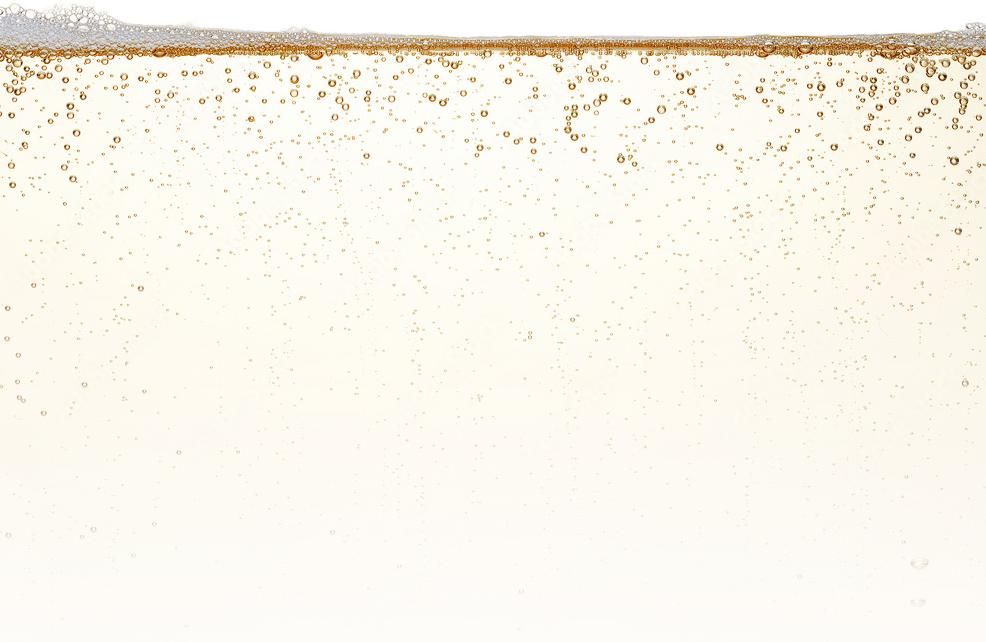CHALK ABOUT CHAMPAGNE
Margaret Rand
Champagne vignettes: a deep, damp, cold chalk cellar in February with rain seeping through the roof, dark because the water has fused the lights. A celebration of rosé at Veuve Clicquot with pink and yellow balloons, pink and yellow owers, pink and yellow paper lanterns, and monogrammed yellow wellies for walking in the vineyards. A scientist scattering metal bottle tops on a table: this kind of lining allows in a tiny amount of oxygen during lees-ageing, this kind more, this kind none. A promotional video of celebrity models, all owing hair and fabulousness. A grower apologetically brushing mud and dog’s hair o the seat of his car.
ere are many champagnes. Sometimes they seem barely compatible. Growers might dismiss the big houses, the grandes marques, as producers of safe, industrial wine; a grande marque might comment acidly that the growers are all millionaires now.
ere is tourist imagery – cellars dug into the chalk by the Romans and happy growers picking succulent grapes. ere is myth – lifestyle, parties, celebrity. And there is reality: computer-controlled winemaking, intense research and, in places, a return to pre-industrial methods. is is the main tension – between industrial and artisan champagne. e big négociant houses – Veuve Clicquot, Pol Roger, Louis Roederer, Moët & Chandon – have spread the taste for champagne globally with marketing skills and non-vintage cuvées blended for year-to-year consistency. To the world at large, these wines are what champagne is. e world should be pleased. To achieve the level of quality of Veuve Clicquot or Roederer or Krug, on such a scale, year in, year out, is only possible because they are extraordinarily good viticulturists and winemakers. It’s just that they don’t talk about it.
Making a blend that tastes the same year after year isn’t easy. Any of the chefs de caves (the winemakers of champagne) will say their agship non-vintage is the most challenging and rewarding wine to blend. ere may be adjustments to avour over time – dosage may be reduced, or the use of oak introduced or removed – but consumers aren’t meant to notice. Consistency is what matters.
14 FOREWORD
Im arum conestium intem cus quidundit quas excesti veritaquis ut voloreriam, eum non eariamu stiisqui beris esed quis et exero odit, qui o cimus aces magnis est et o ci que volo quam esFic te eribusa
is is where terroir comes in. Every year is di erent: the Chardonnay may be fat and ripe, the Pinot Noir ruined by rain. e north of the region might be perfect, the south disastrous. ere are no rules about consistency of weather.

So a chef de cave is supposed to produce the same taste from very di erent ingredients. ey do it by getting grapes from all over the region: the greater the variety of sources and styles, the more blending material they have. Reserve wines, with all the qualities of terroir plus the richness of age, ll the gaps. e other side of the coin is good growers who challenge all the conventions we’ve accepted from the big houses. eir wines are not the same year after year, and they rejoice in di erence, in terroir. ey may have lower yields and greater ripeness, and less chaptalization: the long-standing convention is to pick at 9–10% potential alcohol, and then chaptalize. Cynics, and top growers, say this is because sugar is cheaper than grapes. ese top growers have led Champagne’s slow tiptoe to biodynamics via sustainability; they’ve led the fashion for zero-dosage champagnes, which sommeliers adore even if most consumers still nd them a bit challenging. ey’ve led forays into the region’s older grape varieties, like Petit Meslier and Arbane; they may have concrete eggs, or amphorae in their cellars, and they may rejoice in the risks of wild-yeast fermentations. ey’re a determined, perfectionist, sometimes cussed lot.
Champagne is a northerly, marginal wine region. Climate change and warmer summers help it, but the acidity from a cool climate and chalk are the foundations of the wine’s avour. In Champagne, chalk’s damp, waterholding, water-draining whiteness is everywhere. e main grapes are the same as Burgundy: Pinot Noir and Chardonnay, plus Pinot Meunier, which is
CEPHAS HR TC
Chalk About Champagne
15
Adam Lechmere (2022)
CHEF DE CAVE
Craftsman, Showman, Scientist, Visionary… Frédéric Panaïotis has the top job at Ruinart. As winemaker for one of Champagne’s most distinguished houses (founded in 1729, it is also the oldest), he has all the skills necessary to guide this great wine into its next quarter-century. Adam Lechmere nds out what it takes to be a grande marque winemaker.
Frédéric Panaïotis, the chef de cave of Champagne Ruinart, is at pains to point out that he’s a craftsman, not an artist. You might distinguish the two like this: a craftsman makes the same thing over and over again, only better each time; an artist makes something di erent every time. e description works to an extent, though as Panaïotis says, in Champagne ‘it’s not exactly the same because you can change over the years’.
Ruinart is part of the LVMH empire and a stablemate of Dom Pérignon, Veuve Clicquot, Krug, Moët & Chandon and Champagne Mercier. All these houses have their unique personalities but Ruinart has the distinction of being the oldest (in 1729 Nicolas Ruinart was the rst to set up a company to export champagne), and the only one to use exclusively Chardonnay in its vintage wines.
It’s a venerable institution. Nicolas Ruinart’s uncle, a Benedictine monk called Dom ierry, was a contemporary of Dom Pérignon himself; legend has it that Nicolas was inspired by his uncle’s tales of a wondrous sparkling wine. Ruinart’s foundations lie not only in the apocryphal stories handed down from generation to generation, but also in the bedrock of Champagne: chalk. e house (in common with a handful of others) sits on miles of chalk cellars – the famous crayères of Reims – hewn out by the Romans and now home to hundreds of thousands of bottles.
With such a history (literally) underpinning it, there should be something immutable about an institution like Ruinart, but it’s more complicated than that. While the job of the chef de cave is to achieve consistency of style, they
ON YOUR MARQUES
22
Im arum conestium intem cus quidundit quas excesti veritaquis ut voloreriam, eum non eariamu stiisqui beris esed quis et exero odit, qui o cimus aces magnis est et o ci que volo quam esFic te eribusa
must also ensure that that style evolves. ‘Modernity is as important as tradition. You might aim to be modern, but if you don’t change, then after ve years you’re not modern any more. You need to be on the move without making a revolution, but slightly and consistently evolving to achieve your goal.’

It’s rather like the famous analogy of the swan: serene and unru ed on the surface while underwater its legs are paddling for dear life. Panaïotis gives an example of the sort of ne-tuning his job necessitates. When he became chef de cave in 2007 he decided the dosage (the additional shot of wine and sugar that’s added before corking) was slightly high in the Blanc de Blancs and ‘R’ de Ruinart, the two non-vintage cuvées. e wine was a little too sweet – ‘I thought it was becoming a little too comfortable,’ is his phrase. ‘It was around 12 or 13 grams per litre so I brought it down to nine grams. en I started getting letters from our older customers.’
So he quickly readjusted the sugar level. ‘I went back to 11, and then began to gradually lower it. We’re now at seven grams per litre for the nonvintage, and we may go even lower, to six or ve.’
Dosage levels are changing across Champagne. ‘ e balance of the wine is changing and we can do the same job with less dosage,’ Panaïotis says. ere are many reasons for this. Climate change is one of them: it is now easier to achieve ripeness, harvests are routinely earlier, and grapes are brought in with lower levels of acidity. ‘ e wines are not as lean as they used to be, so we need less sugar to balance them out.’ en there are changes in the vineyard,
23Chef De Cave
RUINART HR
more use of cover cropping resulting in more competition for nutrients which means thicker-skinned berries. In short, Panaïotis says: ‘We’re getting better at winemaking.’
Winemaking is an incredibly precise business, but it is only a part of the job of the chef de cave. Ask Panaïotis to describe a typical day and he laughs. ‘ ere’s no such thing. It can be anything.’ On the day we meet over zoom, for example, he has been in the vineyard surveying progress on Ruinart’s biodiversity project: the planting of 25,000 trees and shrubs in its Taissy-enChampagne vineyard. ‘ en later on today I will be tasting this year’s releases and writing the tasting notes.’
On other days he might be meeting with Ruinart’s resident artist. At the time of writing, this year’s appointment has not been announced (‘It’s someone super-famous’); in 2020 it was the British artist David Shrigley. Panaïotis will spend a good deal of time with whoever is appointed. ‘We’ll visit the cellars and the vineyards, there will be lunches, dinners. I met David in London a couple of times.’ He nds the process fascinating. ‘An artist has such an acute visual sense, whereas for me it’s more the nose and the palate. Talking to the artists is a source of inspiration to me.’
If meeting an artist is inspiration, then the actual blending of the vins clairs, the base wines – this happens before the second in-bottle fermentation takes place – is ‘excitement’. ‘ e whole year coming to the glass to see how well we’ve done, what nature has given us.’ Sessions take place between October and December, with the team typically tasting 25 to 30 samples over an hour. During the winter they will taste up to 350 samples. It’s a routine, Panaïotis says. ‘I don’t want to share our secrets but we’re looking for purity and precision, no trace of oxidation or lactic character, though a bit of reduction is normal and even welcome in the early stages.’ e team also looks for the key di erences in style between the non-vintage wines (the Blanc de Blancs and Brut, and the ‘R’ de Ruinart) and the vintage wines (led by the agship Dom Ruinart). e non-vintage, Panaïotis says, should be a ‘9am to 9am’ wine – one that you can drink at any time of the day or night. ‘ ey have to be clean and dry but lovely and bright, with a rounder and softer balance, in order to be perfectly approachable in two-and-a half-years when they go on the market.’ For vintage wines, ageing capacity is key. en there is harvest, which Panaïotis describes as the most challenging part of his job. ‘ e days are very long, you have so little time, you have to deal
24 ON YOUR MARQUES
with human factors and natural factors, and you have to make quick decisions under stress that have huge impact.’ Ruinart owns 25 percent of its vineyards (unusually for Champagne) and so Panaïotis has a measure of control over growing conditions – but for the rest of the vineyards he has to call on his diplomatic skills. ‘You have to be very good at managing those relationships – the grower has to trust you and you have to trust them.’ Here, though, as in every aspect of the life of a vigneron, things are changing: the sons and daughters of long-established growers are now taking over; a new generation that ‘knows more about sustainability, about new methods in the vineyard’. e chef de cave, then, understands craft, and art, sustainability, biodiversity and diplomacy. He must also be a scientist – the great Champagne houses are obsessive collectors of data, especially if they are part of an operation the size of LVMH, which last year opened the Robert-Jean de Vogüé Research Centre in the Champagne village of Oiry, a €20-million project dedicated to research around sustainability. ‘We are at the cutting edge of science. We use every single technology possible to understand what we do, and how to
Otaturepe res aut aut utatus ex et voluptam, omnimag natus. Qui dusa corepuda num autatem ullum quibust am, odiciis dem. Nectota tesectio ium faccusti sim aut et eos dolumqui blaut quiaspitium, est,El
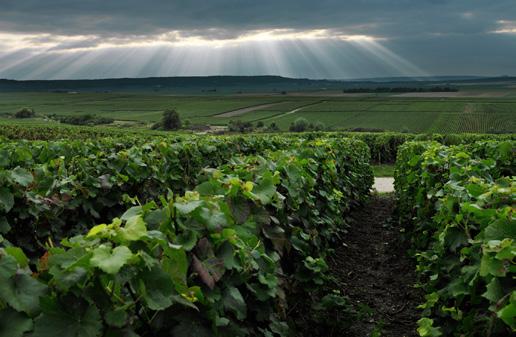
25
Chef De Cave
RUINART HR
Elin McCoy (2022) HOMAGE TO THE WIDOW
In no other wine region have women played such a visible and formative role. Many of Champagne’s grande marques today – Veuve Clicquot, Pommery, Laurent-Perrier and Henriot among them – bear witness to those who have conquered markets, blazed trails and created the wines that now bear their names. Elin McCoy traces the widows, pioneers and winemakers who shaped Champagne’s early history and those who bring acclaim to its leading houses today. eir in uence shines brightly and continuously…
In 2020, Vitalie Taittinger became president of her eponymous family Champagne house. Her earliest memories of growing up in in the region are smelling autumn on walks in the woods and sipping leftover warm bubbly. When she took over, her father left two letters on her desk; one proclaiming his full con dence in her, the other telling her to take all the hard decisions with her heart.

at same year, Julie Cavil was named the rst female chef de cave at prestigious Champagne Krug, one of the top winemaking jobs in the region. She’d shadowed Eric Lebel, the former chef de cave, for 13 years, absorbing intangible aspects of craftsmanship, his intimate knowledge of vineyard plots, the taste and smell of reserve wines from many vintages. And she now leads a six-person winemaking team of three women, three men, each bringing something unique.
Both their stories are part of a larger comeback tale as well as something new: a generation pushing to create a more equitable future for women in the cellar, the vineyard, and the boardroom in the region, and convey a new idea of bubbly to drinkers.
30 ON YOUR MARQUES
FILL 3 lines
The 19th century pioneers
Yes, men have owned and managed the vast number of wine estates in the region throughout history, and they’ve also mostly been the winemakers. But Champagne’s past has included a surprising number of strong-minded women who built famous grandes marques and exerted a profound in uence on the region’s wines through bold investments in technical innovations that resonate today. Highly attuned to the desires of consumers at the time, they revolutionized marketing, just as their female counterparts today are trying to do. e route to their responsible positions, though, was highly traditional, through the untimely deaths of young husbands, with no grown sons to leap in. For 100 years, and more, running an estate almost required becoming a widow rst.
Today, things are di erent, but determination still turns out to be a must, belonging to a Champagne family helps, and for many, formal education in oenology is essential.
I’ve always been fascinated by Champagne’s forward-thinking widows, starting with Widow Clicquot. In old drawings and paintings, she appears solid and formidable, a broad stately gure with a lace cap on her hair, layers of petticoats and dresses, and a serious, impassive look on her face that seems to say: ‘Don’t mess with me. I know what I’m doing.’
She created Veuve Clicquot from the modest wine maison owned by her husband, François Clicquot, after he died in 1805 from typhoid fever. Only
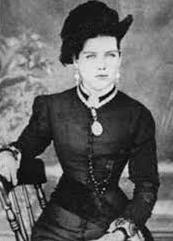

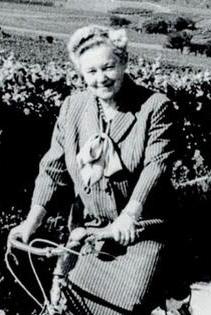

Homage to the Widow

31
Barbe-Nicole Ponsardin
Apolline Henriot
Louise Pommery
Mathilde Emilie Perrier Lily Bollinger
ALL WIKI OK INTERPOLATE IMAGES
The Early New Wave and The 21st Century
Fast forward to the 1990s. With a generational shift in the region, things were changing. Champagnes from small, independent producers and growers who had decided to launch their own labels – so-called farmer zz – were on the rise, nding their way outside France. Daughters of owners were establishing themselves in important careers outside the region. e easiest roles for women to grab at a Champagne house were in marketing, but when it came to a woman running the show, that still happened primarily because of dire family circumstances.
at’s the story of Anne Malassagne of family-owned, century-old grower house A R Lenoble, with 18 hectares of vines. When her father became ill in 1993, she was 28, on a fast track in Paris as a nancial director at L’Oréal. She was the only family member able to take over, though she had no idea how to make wine. ‘It was really di cult,’ she told me a few years ago at a conference held at A R Lenoble. ‘I had to ght for credibility.’
It was an era in which women struggled for their voices to be heard.
Carol Duval-Leroy, whose husband died in 1991 at the age of 39, once said that no one thought she could succeed when she didn’t sell to one of many potential buyers; she’d promised her husband to keep the house family owned. She had little support for her decision. Yet she eventually became the rst female president of the Association Viticole Champenoise and promoted the rst woman in Champagne to chef de cave – at her own house. ese women, and others who headed their own houses, such as Evelyne Boizel, helped spur change in the 21st century.
Based on her experiences, Anne Malassagne decided what was needed was an all-female organization to make women more visible, promote them as professionals, and o er guidance for how to move up in the industry when you have children. So began La Transmission: Femmes en Champagne. Her rst attempt, in 2011, fell at. When she tried again in 2016, joining up with dynamic Maggie Henríquez, then head of Champagne Krug, the idea resonated, maybe because a new generation was coming into positions of in uence at their family properties. It was a place where they could speak ‘without power struggles’.
e nine women members mirror Champagne’s diversity, highlighting women owners at grand and tiny domaines, of di erent ages, in di erent parts of the region. Besides Malassagne, Duval-Leroy and Melanie Tarlant, it includes
MARQUES

34 ON YOUR
IMAGE REQUESTED – MAY NEED TO REPLACE?
Alice Paillard, Vitalie Taittinger, Charline Drappier, Chantal Gonet and Delphine Cazals.

‘We’re not about ego,’ Maggie Henríquez told me a few years ago. ‘It’s about mentoring the next generation of female leaders in Champagne.’
Working outside the region has been one way some of them gained the necessary con dence. Tarlant, for example, returned to Champagne Tarlant, which she co-owns with her brother, after proving herself in lm production. She was rst woman in 12 generations to have an o cial job in the family business; she learned from her mother and grandmother, but like so many women of their generation, their work went unremarked. Tarlant was one of
35Homage to the Widow La Transmission Femmes en Champagne: 1 Melanie Tarlant 2 Maggie Henríquez 3 Vitalie Taittinger 4 Charline Drappier 5 Delphine Cazals? 6 Carol Duval-Leroy 7 Anne Malassagne 8 Chantal Gonet 9 Alice Paillard (Please check names are in correct positions) 1 2 3 4 5 6 7 9 8
REQUEST FROM A LECHMERE CLUB O
Olivier Krug Is rerum faccate mporum est, sequo o ci denditate viti aut opti inisque entius sitati volore verum quis solut mo tempores asit, invenih itibus estiis nos
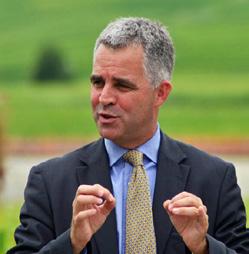
Julie Cavil Cab illesti umquatae re porerovit maxime od et experchil intiis sequist magnimo luptam qui sustion ectendis quat omnit illabo. Tatiis volor modi si tecum utatur suntiur rerio
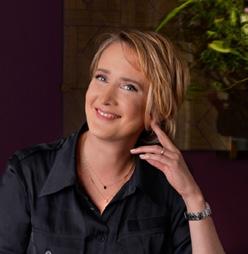
both a non-vintage and a vintage cuvée. It sent shivers down the spine of Eric Lebel, then chef de cave, to read the philosophy that articulated everything that he had for so long aspired to achieve.
Perfectionism Before Tradition
‘Joseph was not a non-conformist, he was a very serious German guy, but he was ready to go beyond the rules to create something di erent,’ Olivier re ects. ‘He left the stability of the largest house in Champagne in 1842, with a vision to create a champagne that didn’t exist.’ at same daring spirit ows in Olivier’s blood, relentlessly pursuing the very nest grapes, regardless of variety, vineyard classi cation or village reputation, and fanatical vini cation, regardless of cost.
Pinot Meunier is prized, even in these wines of untiring longevity. Classi cation tastings are conducted blind, with no regard for a vineyard’s cru. Krug purposely does not constrain itself to Grand Cru, nor even to Premier Cru, and its reach has extended as far even as the village of Les Riceys at the most southerly extreme of the Côtes des Bar, on the border of Burgundy. Krug owns just 21 hectares, less than 35 percent of the vineyards required to meet annual sales of an undisclosed gure somewhere in the vicinity of
40 ON YOUR MARQUES
ALAMY HR TC
650,000 bottles. Olivier says that Krug is not selling any more bottles today than it was 15 years ago, though production has increased by an undisclosed amount to facilitate a slow future growth in sales. My estimation is that Krug is currently producing between 900,000 and one million bottles annually.
Estate vineyards are supplemented with fruit from 73 hectares owned by 100 loyal growers, some of whom have supplied the house since its foundation. More than 90 percent of Krug’s contracts are signed according to individual plots. ‘Ten years ago, people laughed at us, as most growers will not commit to a plot,’ Olivier reveals. Flexibility is upheld to maintain quality in di cult vintages.
‘One grower called us in 2010 and said: “I have a di erent plot for you because yours was done by rot”,’ he says. Few champagne houses can claim such loyalty. Olivier personally visits the vineyards every day during harvest.
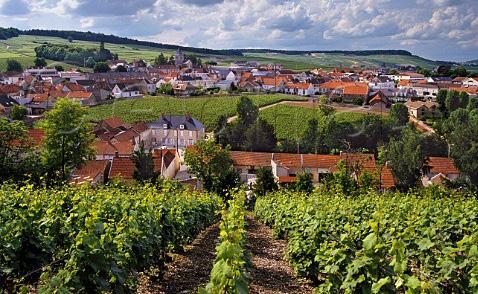
Krug pays a premium for higher-quality grapes, and pays its picking teams mostly by the hour rather than the usual rate by the kilogram, an important distinction in ensuring stringent selection in the vineyards. Pickers are instructed to drop anything with rot and burnt or weak berries. I was surprised by just how much fruit was dropped in the mid-rows of Clos d’Ambonnay.
Rum qui samendi auditibusae quunt dolo iste iunt,Us ped molum est quatemp orestiur sint, ut acculpa ritaquiae dendis ut as sit, sus es aut as
41
King of Champagnes
CEPHAS HR TC
Rum qui samendi auditibusae quunt dolo iste iunt,Us ped molum est quatemp orestiur sint, ut acculpa ritaquiae dendis ut as sit, sus es aut asLendant, illiqui cus ut untibusam, sa dolorporatur mosam quatem
Magnificent Longevity
Krug attributes its longevity to the primary fermentation of all its wines in more than 4,000 small, 205-litre oak barrels. When I arrived in September 2015, I was confronted by a sea of barrels in preparation for vintage packed tightly into Krug’s large courtyard. And Krug has more barrels on site at its Clos du Mesnil and Clos d’Ambonnay vineyards. It uses these not for oak avour or aroma, but to build richness, complexity, balance and a ‘high delity’ not possible in stainless steel.

is is achieved by using old casks of average age 20 years, currently dating back to 1964. ey are decommissioned after about 50 years, when they become too di cult to repair. Seguin Moreau barrels were used exclusively in the past, but Taransaud have been introduced recently. ‘It took six years of tasting trials to establish the best coopers for Krug,’ Julie tells me. All barrels are purchased new and are seasoned for a few years by fermenting the second and third press before it is sold for distillation. A waste of a new barrel, but that’s Krug!
To uphold freshness, Krug’s wines spend just a short time in cask and are transferred to tanks following fermentation. When I visited in early January
44 ON YOUR MARQUES
WIKI HR
2019, half of the 2018 harvest had already been racked to tanks. Contact with oxygen during fermentation furnishes Krug with a resilience when it contacts oxygen as it ages, infusing its wines with rock-solid consistency. I have not seen the degradation of freshness in Krug bottles that plagues many other champagnes as they travel around the world. ese are wines capable of ageing magni cently for decades.

When a bottle in Krug’s museum cellar popped as its cage was replaced a few years ago, the board and winemakers were immediately assembled to taste the wine blind. Vigorous debate ensued as to whether it was from the 1950s or the 1960s, but it was decided it was too fresh for the 1960s. It turned out to be 1915 – all the more remarkable because the Côte des Blancs was under occupation during World War I and the wine was made exclusively from Pinot Noir, without the structural longevity of Chardonnay.
e age of Krug’s cuvées is revealed, rst thanks to an ingenious ID code printed above the barcode of every bottle, the rst three digits of which indicate the trimester ( rst digit) and year (second and third digits) in which it was disgorged. Using this code, Krug.com and the Krug app reveal the season and year in which the bottle was shipped, the number of years over which it has aged, the blend and the vintage story for vintage wines. For non-vintage blends, it reveals the number of wines and each of the vintages. Eric has recently been elaborating wonderful insights into the crus and the seasons, making Krug.com an increasingly powerful and invaluable resource. ere is even a Twitter robot that will reply with the details when you tweet #KrugID with the code.
Secondly, in 2016 Krug began printing the edition number on the front label of every Grande Cuvée, though this has been discontinued on half-bottles, because the house doesn’t want to encourage people to age these. Edition 166 is based on the 2010 harvest, the 166th release in its history. is edition number comes with another exciting promise from Krug, the release of older editions of Grande Cuvée in the future.
Such disclosure ushers in a brand-new era for Krug, initiated by Maggie Henríquez, Krug’s dynamic CEO since 2009. ‘I was resisting the concept of disclosing the disgorgement date,’ admits Olivier. ‘But the world has changed. People want to know. I have changed. And we are keen to be more transparent now.’ Bravo, Maggie.
Extract from e Champagne Guide 2020–21, Edition VI, by Tyson Stelzer (Brisbane, Australia) 2019
45
King of Champagnes
Jay McInerney (20xx)
BOLLY AND POL
Jay McInerney praises two of his favourite, family-owned Champagne houses, each de rigeur in Great Britain – where champagne is ‘viewed more as a necessity than a luxury’ – suggesting they should be essential drinking in the States too…
e recent history of Champagne can be summarized thusly: the big get bigger and the small get street cred. e grand marques are increasingly coming under consolidated ownership – you could be forgiven for thinking that luxury brand group LVMH owns all of them – even as the small grower champagnes, very few of which were available on these shores ve years ago, have become the darlings of critics and sommeliers. Somewhere in the middle are a handful of venerable family-owned brands, including two of my favourites, Bollinger and Pol Roger, both of which have long been immensely popular in Great Britain, where champagne is – quite correctly, I feel – viewed as more of a necessity than a luxury. Fortunately, both rms send enough bubbly to these shores to ensure that most of us should be able to nd some for the holidays.
One of the smallest of the big houses, which has remained in the same family since it’s founding in 1849, Pol Roger has always been a connoisseur’s champagne. Its most famous patron was Winston Churchill, who declared its headquarters, at 44 Avenue de Champagne in Epernay, ‘the world’s most drinkable address’. In fact, the address has recently been changed to 2 Rue de Winston Churchill, though my GPS didn’t seem to have been apprised of this change as of my visit in October. ‘I cannot live without champagne,’ Churchill famously declared. ‘In victory I deserve it and in defeat I need it.’ Pol Roger was his favourite champagne and he became close with the family. After Churchill’s death the company created a special cuvée in his honour. Released only in exceptional years, beginning in 1975, the Pinot-heavy cuvée has been called ‘burgundy with bubbles’, and it’s almost always one of the greatest champagnes of the vintage, though I sometimes almost prefer the intricately subtle vintage
YOUR MARQUES
46 ON
Rum qui samendi auditibusae quunt dolo iste iunt,Us ped molum estTem faccat lictiis quiat. Oluptatur re preperisquid que maximuscil modionserro optatus, vendi bea
blanc de blancs, made from 100% Chardonnay, especially in its youth.
Touring the seven-kilometre maze of cellars underneath the streets of Epernay with urbane managing director Laurent d’Harcourt – which in mid-October were overwhelmingly fragrant with freshly fermenting must – I experienced rst-hand one of the alleged secrets of Pol Roger’s success: at more than 30 metres below ground, the cellars are deeper than those of its neighbours, which makes them as much as a degree and a half Farenheit (nearly one degree Celcius) cooler, and prolongs the fermentation and maturation process. e depth of the tunnels may be explained by the collapse of the former cellars in 1900, resulting in the loss of a million and a half bottles.
Another factor in the quality of Pol Roger wines is the collective family palate, represented by Pol Roger descendants Christian Pol Roger, Christian de Billy and his son Hubert de Billy. Although the winemaker, Dominique Petit, formerly of Krug, vini es more than 30 di erent lots from Pol Roger’s own 200-plus acres (81 hectares) of vineyards and purchased grapes, the decision on nal blend is made by family members. e jovial, gregarious Hubert de Billy, great-great-grandson of Pol Roger, is the latest incarnation of the family palate. I managed to catch him on a

Bolly and Pol 47
POL ROGER HR



